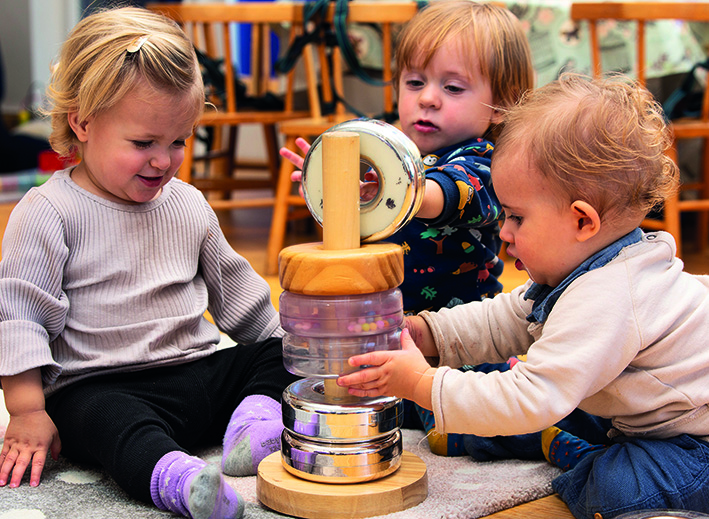
Signs of spring are visible at The Gower School Nursery in Islington, north London. Tables are decorated with yellow-print cloths, and recycled glass jars containing daffodils are placed in the centre. Two-year-old Ariel takes a tray containing yellow petals to a table and uses tongs to carefully transfer them, one-by-one, into a bowl. Millie works on another tray-based activity, using a small brush and a bowl of yellow coloured water to practise cleaning a boot.
‘Encouraging children to be independent and self-reliant is at the heart of the Montessori ethos,’ says deputy head of nursery Sofia Pedrana.
MODERN APPROACH
 At the 130-place nursery, children are introduced to elements of Montessori methodology from the age of three months. ‘It starts with sensory-based exploration, moves into practical life activities and, by the age of three, children are using Montessori-specific apparatus to help prepare them for modern-day life,’ Pedrana explains.
At the 130-place nursery, children are introduced to elements of Montessori methodology from the age of three months. ‘It starts with sensory-based exploration, moves into practical life activities and, by the age of three, children are using Montessori-specific apparatus to help prepare them for modern-day life,’ Pedrana explains.
Register now to continue reading
Thank you for visiting Nursery World and making use of our archive of more than 35,000 expert features, subject guides, case studies and policy updates. Why not register today and enjoy the following great benefits:
What's included
-
Free access to 4 subscriber-only articles per month
-
Unlimited access to news and opinion
-
Email newsletter providing activity ideas, best practice and breaking news
Already have an account? Sign in here









